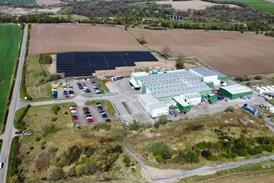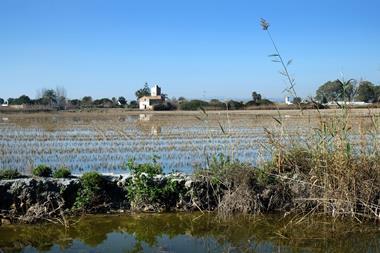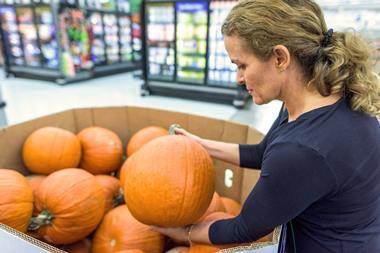Torrential rains in the main citrus producing regions of South Africa may have filled the dams to bursting point after last year's drought but are also expected to take their toll on the crop, said Martin Dunnett, Capespan UK procurement director.
The increased levels of moisture at this critical period mean that fruit is potentially subject to waste developing through mould and a loss of skin pressure.
"We are already anticipating that the orange crop could eventually be 10%-20% below the original estimates," he said.
This will initially affect Navels grown in the Eastern Cape at a time when the South African industry had been hoping to match a preference for these by British customers. The first arrivals are expected in the UK next week.
Meanwhile the Valencia crop, mainly grown in the Northern Cape, which is harvested in August and marketed until October, has also not escaped unscathed.
While final crop forecasts are yet to be announced, the UK normally accounts for three to three and half million cartons. But this could be lower as growers are also meeting demands from new markets purchasing citrus in the Middle East.
The news comes at a time when easy peelers, which are marketed earlier, are facing a slow market, according to Dunnett. However, the impact of the increase in the Spanish lemon crop was not expected to affect South African programmes.
Last year proved to be one of the most challenging yet for Capespan, with total volumes of fruit marketed and net profit slumping.
n The Spanish citrus crop, which is now reaching the end of its season, is expected to be lower than last year according to the USDA.
Dessert oranges have fallen from 2.68 to 2.26 million tonnes, of which total exports will account for 1 million tonnes.
Easy peelers at 2.13 million tonnes continue to make headway in popularity, although the export figure will be down from 1.54 to 1.46 million tonnes.
The increased levels of moisture at this critical period mean that fruit is potentially subject to waste developing through mould and a loss of skin pressure.
"We are already anticipating that the orange crop could eventually be 10%-20% below the original estimates," he said.
This will initially affect Navels grown in the Eastern Cape at a time when the South African industry had been hoping to match a preference for these by British customers. The first arrivals are expected in the UK next week.
Meanwhile the Valencia crop, mainly grown in the Northern Cape, which is harvested in August and marketed until October, has also not escaped unscathed.
While final crop forecasts are yet to be announced, the UK normally accounts for three to three and half million cartons. But this could be lower as growers are also meeting demands from new markets purchasing citrus in the Middle East.
The news comes at a time when easy peelers, which are marketed earlier, are facing a slow market, according to Dunnett. However, the impact of the increase in the Spanish lemon crop was not expected to affect South African programmes.
Last year proved to be one of the most challenging yet for Capespan, with total volumes of fruit marketed and net profit slumping.
n The Spanish citrus crop, which is now reaching the end of its season, is expected to be lower than last year according to the USDA.
Dessert oranges have fallen from 2.68 to 2.26 million tonnes, of which total exports will account for 1 million tonnes.
Easy peelers at 2.13 million tonnes continue to make headway in popularity, although the export figure will be down from 1.54 to 1.46 million tonnes.

















No comments yet